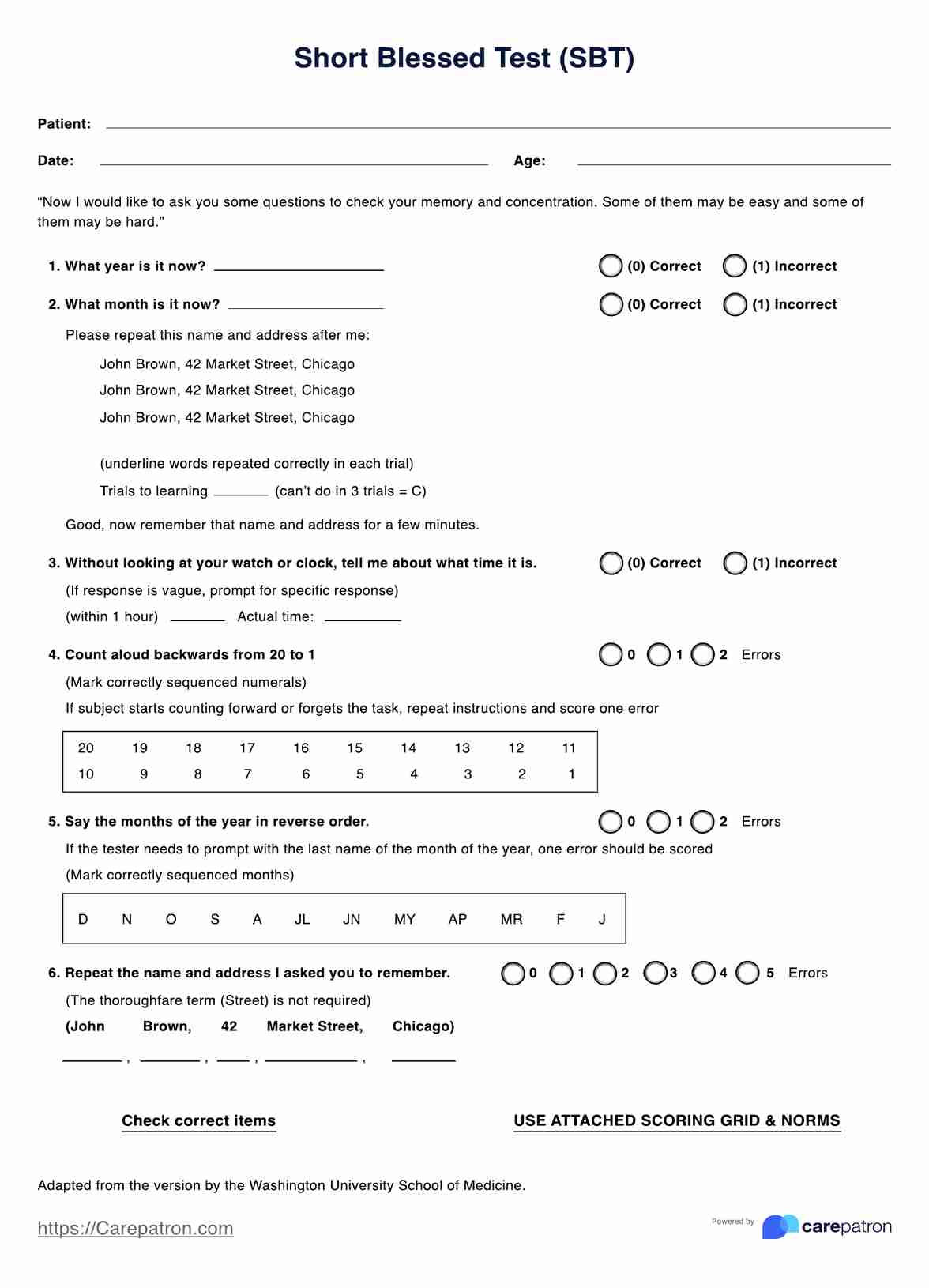No. While this can detect possible signs of dementia, it is not a diagnostic tool, so you should never use this to diagnose patients with dementia or any cognitive disorder. It can be part of the diagnostic process, though, alongside other assessments to make up a comprehensive patient examination.

Short Blessed Test
If you are dealing with older adults suspected of having cognitive impairment, administer the Short Blessed Test to determine if they need to undergo comprehensive treatment.
Short Blessed Test Template
Commonly asked questions
No. If they already have a severe cognitive impairment, you shouldn’t use this test on them anymore because you’ll likely get the same results, and they might not even be able to answer the items in the first place. You should only use this on patients who can still communicate and hear clearly.
Yes, however, that does not mean they are not at risk of developing cognitive impairment down the line. It’s recommended that they do routine check-ups, especially if they are at the age when developing cognitive impairment and disorders is common and expected.
EHR and practice management software
Get started for free
*No credit card required
Free
$0/usd
Unlimited clients
Telehealth
1GB of storage
Client portal text
Automated billing and online payments











